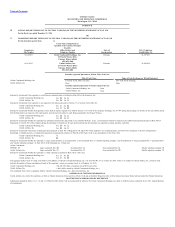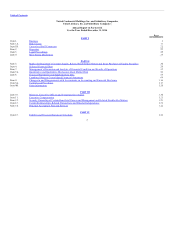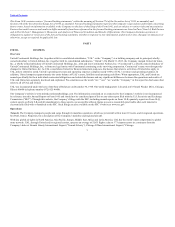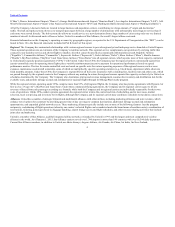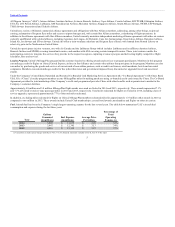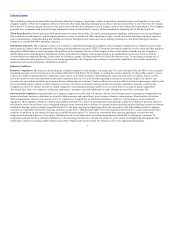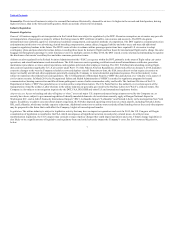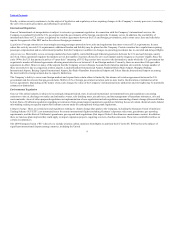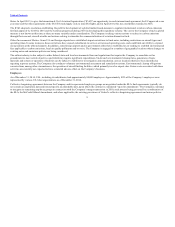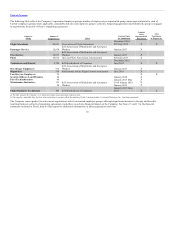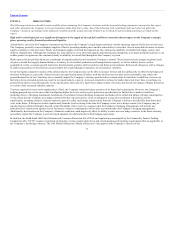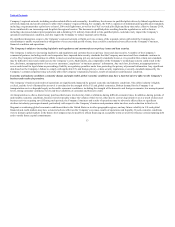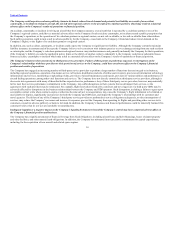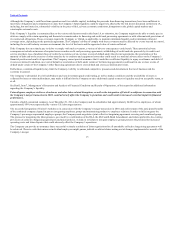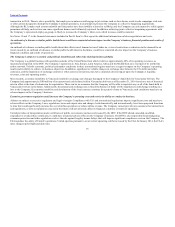United Airlines 2014 Annual Report Download - page 7
Download and view the complete annual report
Please find page 7 of the 2014 United Airlines annual report below. You can navigate through the pages in the report by either clicking on the pages listed below, or by using the keyword search tool below to find specific information within the annual report.
Table of Contents
Seasonality. The air travel business is subject to seasonal fluctuations. Historically, demand for air travel is higher in the second and third quarters, driving
higher revenues, than in the first and fourth quarters, which are periods of lower travel demand.
Domestic Regulation
All carriers engaged in air transportation in the United States are subject to regulation by the DOT. Absent an exemption, no air carrier may provide
air transportation of passengers or property without first being issued a DOT certificate of public convenience and necessity. The DOT also grants
international route authority, approves international codeshare arrangements, and regulates methods of competition. The DOT regulates consumer protection
and maintains jurisdiction over advertising, denied boarding compensation, tarmac delays, baggage liability and other areas, and may add additional
expensive regulatory burdens in the future. The DOT’s series of rules to enhance airline passenger protections have required U.S. air carriers to adopt
contingency plans and procedures for tarmac delays exceeding three hours for domestic flights and four hours for international flights and to charge the same
baggage fee throughout a passenger’s entire itinerary (even if on multiple carriers). In May 2014, the DOT issued a notice of proposed rulemaking to regulate
the disclosure of air carrier’s ancillary fees and other consumer protection issues.
Airlines are also regulated by the Federal Aviation Administration (the “FAA”), an agency within the DOT, primarily in the areas of flight safety, air carrier
operations, and aircraft maintenance and airworthiness. The FAA issues air carrier operating certificates and aircraft airworthiness certificates, prescribes
maintenance procedures, oversees airport operations, and regulates pilot and other employee training. The 2011 FAA final rule amending existing flight,
duty and rest regulations applicable to U.S. air carriers under Part 117 of the Federal Aviation Regulations, which took effect on January 4, 2014, mandates
extensive changes to the way the Company schedules crews and deploys aircraft. From time to time, the FAA issues directives that require air carriers to
inspect or modify aircraft and other equipment, potentially causing the Company to incur substantial, unplanned expenses. The airline industry is also
subject to numerous other federal laws and regulations. The U.S. Department of Homeland Security (“DHS”) has jurisdiction over virtually every aspect of
civil aviation security. In March 2014, the Occupational Safety and Health Administration (“OSHA”) extended its regulatory programs for hazard
communication, hearing conservation and blood-borne pathogens to areas of cabin crewmember safety and health. The Antitrust Division of the U.S.
Department of Justice (“DOJ”) has jurisdiction over certain airline competition matters. The U.S. Postal Service has authority over certain aspects of the
transportation of mail by airlines. Labor relations in the airline industry are generally governed by the Railway Labor Act (“RLA”), a federal statute. The
Company is also subject to investigation inquiries by the DOT, FAA, DOJ, DHS and other U.S. and international regulatory bodies.
Access to landing and take-off rights, or “slots,” at several major U.S. airports and many foreign airports served by the Company are, or
recently have been, subject to government regulation. Federally mandated domestic slot restrictions currently apply at Reagan National Airport in
Washington D.C., and at John F. Kennedy International Airport (“JFK”), LaGuardia Airport (“LaGuardia”) and Newark Liberty in the metropolitan New York
region. In addition, to address concerns about airport congestion, the FAA has imposed operating restrictions at certain airports, including Newark Liberty,
JFK, and LaGuardia, which may include capacity reductions. Additional restrictions on airline routes and takeoff and landing slots at these and other airports
may be proposed in the future that could affect the Company’s rights of ownership and transfer.
The airline industry is subject to legislative activity that may have an impact on operations and costs. In 2015, the U.S. Congress will begin
consideration of legislation to reauthorize the FAA, which encompasses all significant aviation tax and policy related issues. As with previous
reauthorization legislation, the U.S. Congress may consider a range of policy changes that could impact operations and costs. Climate change legislation is
also likely to be a significant area of legislative and regulatory focus and could adversely impact the Company’s costs. See ,
below.
7

